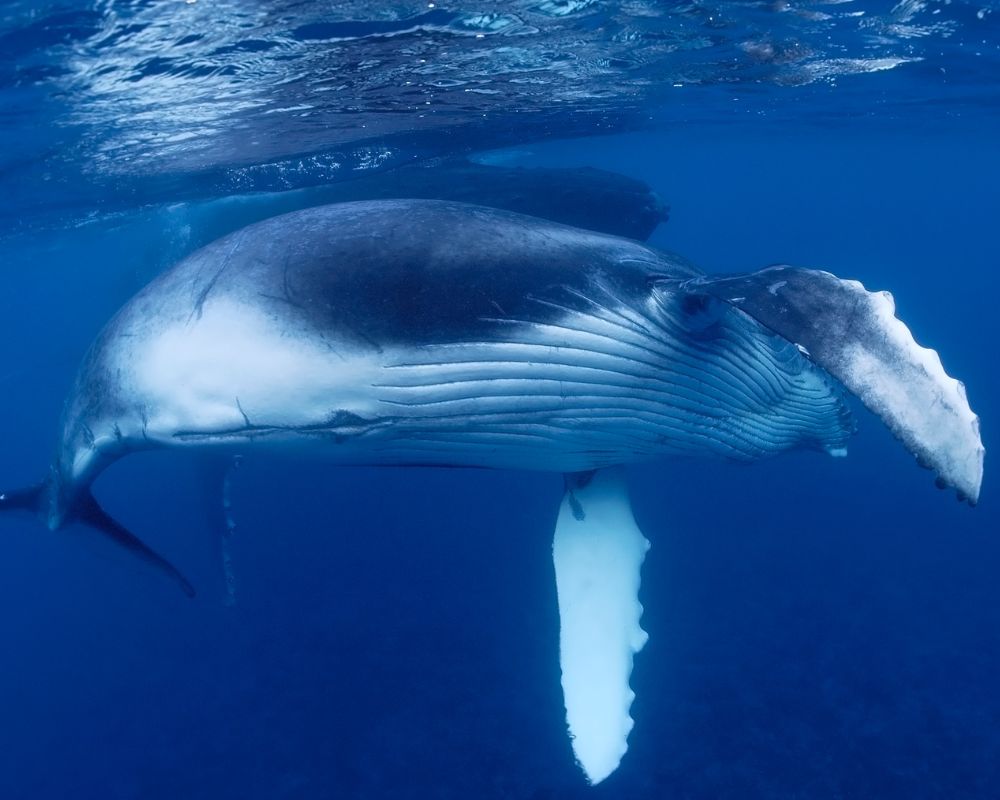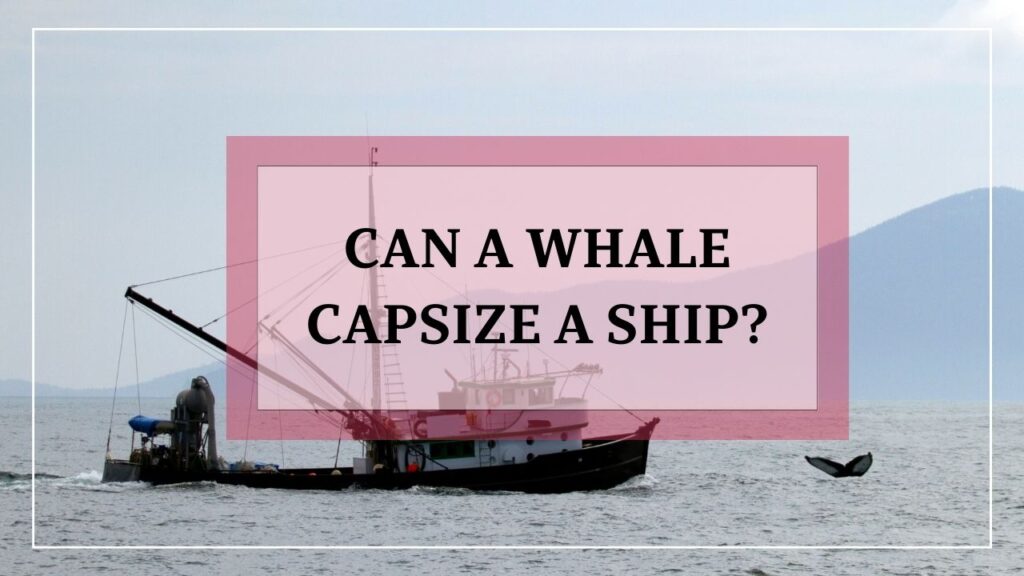Hey there! Have you ever wondered if a whale could capsize a ship? It’s a question that has been asked countless times and has sparked many debates. As someone who’s fascinated by marine life, I’m here to share my insights on this topic.
The idea of a massive creature like a whale toppling a ship may seem far-fetched, but it’s not entirely impossible. Whales are among the largest animals on the planet, and their strength and behavior around ships can pose some risks.
In this blog post, I’m going to explore the question of whether a whale can capsize a ship. I’ll be sharing some interesting facts about whales and their behavior around ships, historical cases of whale-ship collisions, and prevention and mitigation measures. So, let’s dive in and discover more about this fascinating topic!
Can A Whale Capsize A Ship?

Yes, it is possible for a whale to capsize a ship, but it is rare. The size and strength of a whale’s tail and flippers, combined with its massive body weight, make it capable of causing significant damage to a ship.
However, whales typically do not deliberately attack ships and most collisions occur accidentally. There have been a few historical cases of whale-ship collisions resulting in damage or even the sinking of the ship.
It’s worth noting that most modern ships have safeguards in place to prevent collisions with whales, such as regulations and guidelines for navigating around whale habitats and technologies like sonar to detect and monitor whales.
These measures can help reduce the risk of accidents and protect both whales and ships. Overall, while a whale capsizing a ship is a rare occurrence, it’s important to take precautions and respect the power of these magnificent creatures in their natural habitat.
Understanding the Size and Strength of Whales
Whales are some of the largest animals on the planet, and their size and strength are imposing. Let’s take a closer look at some of the key characteristics that make these creatures so powerful.
The Different Types Of Whales
There are several different types of whales, including baleen whales and toothed whales. Baleen whales are filter feeders and have a comb-like structure called baleen that they use to strain food from the water. Toothed whales, on the other hand, are predators and have teeth that they use to catch prey.
The Size And Weight Of Whales
Whales vary in size and weight depending on the species. The blue whale, for example, is the largest animal on Earth and can weigh as much as 200 tons.[1]
Even smaller whales, like the humpback whale, can weigh up to 40 tons. To put that into perspective, that’s equivalent to the weight of about 8 elephants!
The Strength Of A Whale’s Tail And Flippers
Whales are also incredibly strong, especially when it comes to their tails and flippers. A whale’s tail, also known as its fluke, is one of the most powerful muscles in the animal kingdom. It can propel the whale through the water at speeds of up to 20 miles per hour. Meanwhile, a whale’s flippers are also strong and can be used for steering and maneuvering.
Whale Behavior Around Ships
As we mentioned earlier, while whales can capsize ships, most collisions between whales and ships happen accidentally. Whales typically do not deliberately attack or approach ships, but there are a few behaviors that can put them at risk of collision.
How Whales Interact With Ships
Whales are highly intelligent and curious creatures that can be attracted to ships for a variety of reasons. Some whales may approach ships out of curiosity, while others may be drawn to the noise or vibrations that ships produce. However, these interactions can be dangerous for both whales and ships.
When a whale approaches a ship, it may not be aware of the potential danger posed by the ship’s propellers or hull. The propellers can cause serious injury or even death to a whale, while the hull can damage the whale’s skin or cause internal injuries.
Additionally, the noise and vibrations produced by ships can interfere with whales’ natural behavior, communication, and migration patterns.
It’s also important to note that whales may not be able to detect ships in their path, especially if they are traveling at high speeds or in low visibility conditions. This can put both whales and ships at risk of collision.
The Risk Of Collisions With Ships
Collisions between whales and ships can be dangerous for both parties. For ships, colliding with a whale can cause significant damage, such as structural damage to the hull or even sinking.
For whales, collisions can result in serious injuries or death. In addition to the physical harm, collisions can also disrupt the behavior and migration patterns of whales.
Examples Of Ship-Whale Collisions
There have been several historical cases of ship-whale collisions, including the famous case of the whaleship Essex in 1820.
The Essex was attacked by a sperm whale and sunk, leading to the tragic loss of several crew members. More recently, in 2019, a cargo ship collided with a humpback whale off the coast of Japan, resulting in the death of the whale.
Historical Cases of Whale vs Ship Collisions
While the risk of a whale capsizing a ship may be low, there have been several historical cases of whale vs ship collisions that have resulted in significant damage or even the sinking of the boat.
Sinking Of The Essex And Ann Alexander By Sperm Whales
One notable example is the sinking of the Essex, a whaling ship that was attacked and sunk by a sperm whale in 1820.
The incident inspired Herman Melville’s classic novel, “Moby Dick.” Another notable case is the sinking of Ann Alexander by a sperm whale in 1851. The crew of the ship survived for several weeks at sea before being rescued.
Collision Of The MS Seabourn Spirit With A Pod Of Whales
In more recent times, there have been cases of ships colliding with pods of whales. In 2007, the MS Seabourn Spirit collided with a pod of whales off the coast of Costa Rica, causing damage to the ship’s hull.
While the ship was able to continue on its journey, the incident highlights the potential risks of ships and whales coming into contact.
These historical cases serve as a reminder of the potential dangers of navigating through whale habitats and the importance of taking precautions to prevent collisions.
In the next section, we’ll discuss some of the measures that can be taken to reduce the risk of whale vs ship collisions.
FAQs
What Happens If A Whale Hits A Ship?
If a whale hits a ship, it can cause significant damage to both the whale and the ship. The whale’s size and the ship’s speed are important factors in determining the extent of the damage. In some cases, the collision can be fatal for both the whale and the crew of the ship.
Can A Blue Whale Capsize A Boat?
Blue whales are the largest animals on Earth, but they are unlikely to capsize a boat. Their size and weight make them capable of causing significant damage to smaller vessels, but they are not known for intentionally attacking boats.
Why Can’t Whales Avoid Ships?
Whales are not able to avoid ships because they are not aware of the dangers that ships pose. Whales use sound to communicate and navigate in their underwater environment, but the noise created by ships can interfere with their ability to detect and avoid them.
Can A Whale Sink A Battleship?
It is highly unlikely that a whale could sink a battleship. The size and strength of battleships make them far more durable than the average ship, and the chances of a whale colliding with a battleship are very low. Even if a collision were to occur, it is unlikely that the whale could cause significant damage to the battleship.

